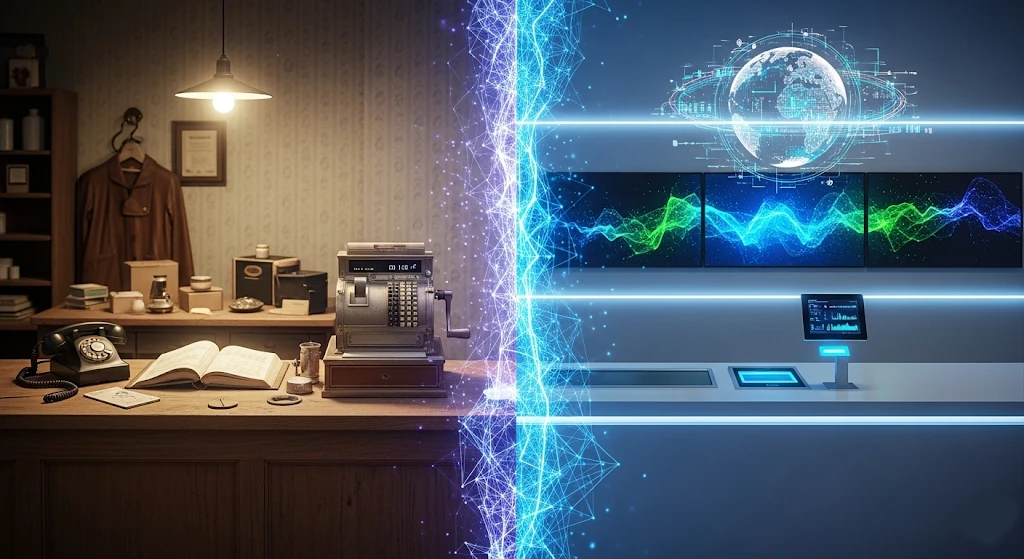
With the increasing numbers of online retailers and a boom in ecommerce shopping, the retail industry has certainly experienced one big shift in the last two decades. Moving away from traditional retail, industry-giants, boutique retailers, and independents alike have taken advantage of the great reach of the digital landscape in order to build upon customer bases and develop their brands beyond physical walls, brick and mortar stores, and boundaries. Instead, retailers now have the opportunity to sell to audiences across the nation and the world, giving even the underdogs a chance to generate huge growth against their competitors.
Modern technology in the retail industry offers a great range of benefits to businesses. And while many choose to sell their products exclusively via the internet, others are remaining true to their roots. Maintaining their physical presence in the high street or in shopping malls but leveraging new technologies in order to modernise the experience, both for their staff and their keen customers.
Improving the in-store experience
While online shopping can be a simple and seamless experience for many, others still strive for the authenticity of in-person shopping. Getting to see products with your own eyes, in the flesh, being able to touch, try on and experience the items in real-time continues to offer benefits that online shopping just simply can not replicate.
However, with the development of online shopping, comes greater demand from customers. Shoppers now seek ease, simplicity and efficient shopping experiences, rather than busy, bustling stores, with crowds and the issue of rummaging through items to find what they are looking for.
In order to meet the needs of the modern customer, retailers have turned to the implementation of in-store shopping technology to enhance the shopping experience. From click and collect services to in-store item finders, self-checkout and gadgets like scan as you shop appearing on both our high streets, supermarkets, and in shopping malls, the traditional mode of shopping has gotten just a little bit easier for customers.
Streamlining POS (point of sale) for sale assistants
Not only can customers benefit from the leveraging of such modern technology but the businesses can streamline their operations too. Particularly in the area of point of sale. Which, for many decades, has been a bone of contention. An area which often sees the highest level of demand for quality customer service and efficiency from sales assistants, modernising POS systems has allowed sales assistants to improve the process. From cutting wait times and queues, to simplifying the technology for new users, and making simple steps such as completing returns, and providing receipts easier than ever before.
For example, many new POS systems are now directly connected to the web, giving sales assistants the ability to utilise other corporate tools and to deploy similar online rewards schemes, in store, whilst also gaining a greater control over stock management.
Utilising data and analytics
With the implementation of modern technology, retailers are now able to collect valuable data on customer behaviour, preferences and trends. This information can then be analysed to make informed business decisions on product offerings, pricing strategies and marketing campaigns. By leveraging advanced analytics tools, retailers can gain a competitive edge by understanding their customers better and providing tailored experiences that meet their needs and desires.
A good example of this is digital rewards schemes and the ability to gather data such as customer emails and preferences for particular products and services.
Embracing omnichannel retail
Another way modern technology can help retailers gain a competitive advantage is through the implementation of an omnichannel retail strategy. This approach involves seamlessly integrating online and offline channels to provide customers with a seamless shopping experience, regardless of how they choose to shop. By leveraging technologies such as mobile applications, augmented reality, and social media, retailers can enhance the customer journey and build a strong brand presence across multiple touchpoints. This not only improves the overall shopping experience but also allows retailers to reach a wider audience and increase their sales potential.
Conclusion
With the continuous development of technology, it is important for retailers to stay updated and leverage new tools in order to thrive in today’s competitive market. By doing so, they can ensure customer satisfaction and drive business growth, making the retail industry a constantly evolving and exciting sector to be a part of. So, whether you’re an established retail giant or a small boutique store, it’s time to embrace modern technology and take your business to new heights.


